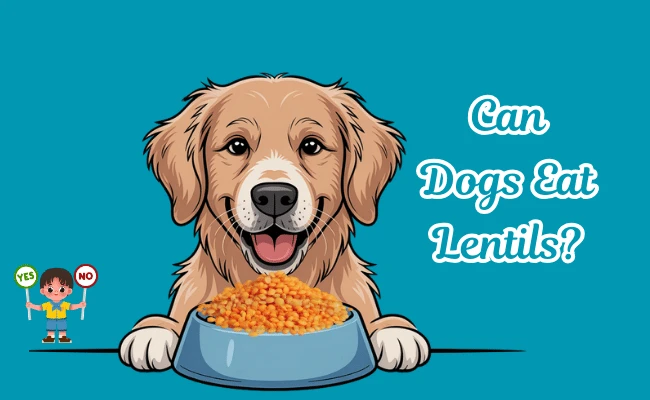On a hot day, you might wonder if it’s safe to share your popsicle with your dog. Many pet owners assume popsicles are harmless, but there are some important things to consider first.
Popsicles are a popular way to beat the summer heat, and it can be tempting to let your dog have a taste. However, it’s important to know if these treats are actually safe for dogs. Some frozen snacks can be a good way to help your dog stay cool and hydrated, but many popsicles have ingredients that could be harmful or upset your dog’s stomach. Here, I’ll explain what you need to know about giving popsicles to dogs, including which ingredients are safe and how to avoid common risks, so you can help your dog stay cool without worry.
What Are Popsicles?

Popsicles are simple frozen treats, usually made by freezing flavored liquids and serving them on sticks. There are two main types: fruit-based popsicles, which use pureed fruit or juice, and creamy popsicles, which blend in yogurt or milk for a smoother feel. You can use ingredients like fresh berries, citrus juice, coconut water, Greek yogurt, or honey. Popsicles are a cool, easy snack that just about anyone can enjoy.
Can Dogs Eat Popsicles?
Yes, dogs can eat popsicles—but only if they’re made with dog-safe ingredients and served in moderation.
Most popsicles made for people have things like xylitol, extra sugar, or artificial flavors, which are not safe for dogs.
Instead, veterinarians and groups like the AKC suggest making frozen treats just for dogs, using simple ingredients like plain yogurt, pureed fruit, or even low-sodium broth.
Pet ice cream and frozen snacks are becoming more popular every year. In Europe alone, pet treat sales reached 9.9 million tons in 2023, and many people see frozen treats as a way to give their dogs something fun and nutritious.
Some research suggests that adding things like probiotics to dog popsicles can help with digestion, keep your dog hydrated, and even provide a bit of mental stimulation.
It’s important to keep treats to less than 10% of your dog’s daily calories, and to introduce any new foods slowly, ideally with your vet’s guidance.
What Ingredients Are Safe for Dog Popsicles?
If you’re thinking about making popsicles for your dog at home, here are some safe ingredients and what makes them good choices.
- Plain Low-Fat or Fat-Free Yogurt
Yogurt is full of probiotics that help with digestion. Go for plain, low-fat, or fat-free yogurt to keep it easy on your dog’s stomach. The creamy texture also makes the popsicles extra smooth. - Bananas
Bananas bring natural sweetness and a creamy texture, plus fiber, potassium, and vitamins. They’re safe for dogs in small amounts and make popsicles taste great. - Berries (Blueberries, Strawberries, Raspberries)
Berries like blueberries, strawberries, and raspberries add flavor and are full of antioxidants, vitamins, and fiber. Blueberries especially are great for your dog’s health. - Peanut Butter (Xylitol-Free)
Most dogs love peanut butter, and it’s a good source of protein and healthy fats. Just double-check that it doesn’t have xylitol, since that’s dangerous for dogs. - Pumpkin Purée (Plain, Not Pie Filling)
Pumpkin is high in fiber and helps with digestion. It can also settle your dog’s stomach if they’re feeling off. - Low-Sodium Chicken or Beef Broth
Low-sodium chicken or beef broth makes a tasty, hydrating base and adds extra nutrients without any unwanted ingredients. - Vegetables like Carrots or Sweet Potatoes
Carrots and sweet potatoes add a little sweetness, plus vitamins and fiber, making the popsicles more balanced.
Making popsicles at home with these ingredients means you know exactly what’s in your dog’s treat. It’s a fun way to help your pup stay cool and healthy during warm days.
Homemade Dog Popsicle Recipes
Making dog popsicles at home is simple and lets you pick out healthy ingredients your pup will love. Here are a few easy recipes and some tips to get you started.
Peanut Butter Banana Yogurt Pupsicles
Ingredients:
- 1 ripe banana
- 3 tbsp xylitol-free peanut butter
- 1 cup plain nonfat yogurt
Instructions:
- Blend all ingredients until smooth.
- Pour the mixture into ice cube trays or silicone molds.
- Freeze for at least 4 hours.
- These are best served outside or somewhere easy to clean up, since pups can get a little messy with frozen treats.
Berry Delight Dog Popsicles
Ingredients:
- 1 cup mixed berries (blueberries, strawberries, raspberries)
- 1 cup plain Greek yogurt
- 1 banana
- ¼ cup water
Instructions:
- Blend berries, yogurt, banana, and water until smooth.
- Pour the mixture into your molds or trays, then freeze for about four hours.
- If the popsicles stick, just run the molds under warm water for a few seconds and they’ll pop right out.
Pumpkin Puree Broth Pops
Ingredients:
- ½ cup pumpkin purée
- ½ cup unsalted, low-sodium chicken broth
- 2 tbsp plain yogurt
Instructions:
- Blend until smooth and pour into molds.
- Freeze overnight for best firmness.
- Give your dog a small portion to help them cool off on a hot day.
Quick Tips for Prep, Freezing, and Serving
- Stick to dog-safe ingredients, and skip anything like xylitol, chocolate, grapes, or artificial sweeteners.
- Ice cube trays or silicone molds are great for making the right size treat, whether your dog is big or small.
- Let the popsicles freeze overnight if you want them extra firm.
- You can hand-feed the popsicles, use an edible treat stick, or just pop them out of the tray for your dog to enjoy.
- Just remember, treats like these should be less than ten percent of your dog’s daily calories to keep things balanced.
Homemade dog popsicles are a fun way to keep your pup cool, happy, and healthy, and you can pick flavors and ingredients that suit your dog best.
How Many Popsicles Can Dogs Eat?
Give your dog popsicles only in moderation. Treats should be no more than 10% of your dog’s daily calories to help keep their diet balanced. For most healthy dogs, this means one small homemade popsicle a day. Aim for about 30 calories for small breeds, 80 for medium, and 160 for large dogs.
Even healthy treats can cause weight gain if you give too many. Pet obesity is a growing problem, so it is important to keep portions in check. Choose popsicle size and how often you give them based on your dog’s weight and how active they are. Measure ingredients and calories, watch your dog while they enjoy their treat, and adjust the amount if your dog is small, older, or has special dietary needs.
Ask your vet for advice on calories and which treats are best for your dog. Most of all, give treats with care and plenty of love, whether you make them at home or buy them.
What to Do if Your Dog Eats Unsafe Popsicles?
If your dog gets into a popsicle that isn’t meant for them, keep an eye out for things like vomiting, diarrhea, being extra tired, drooling, a sore belly, or just seeming off. These signs can show your dog ate something that doesn’t agree with them, like xylitol, artificial sweeteners, or other ingredients that aren’t safe for dogs.
In case of suspected poisoning:
Take away any leftover popsicle pieces or anything else that could be harmful.
Contact your veterinarian immediately or visit an emergency veterinary clinic.
Try to remember what your dog ate and about how much, so you can tell the vet.
Only try to make your dog vomit if the vet tells you to, since doing it on your own can sometimes make things worse.
Keep a close watch on your dog until you can get help from a professional.
Getting your dog to the vet quickly can really help. Stick to popsicles that are made just for dogs, not the ones from the store with mystery ingredients. If you know what to watch for and act quickly, you can keep your dog safe and let them enjoy their treats worry-free.
Can You Buy Commercial Dog Popsicles?
You can find commercial dog popsicles in stores. These frozen treats are made for dogs and are approved by vets. They usually have simple, healthy ingredients like real fruit, yogurt, and flavors that are safe for dogs. There are no harmful additives or artificial sweeteners.
Commercial dog popsicles are easy to use and come in the right size for your dog. They help keep dogs cool and hydrated in hot weather. Many are made with recipes from vets and may include extra ingredients like probiotics or antioxidants to support your dog’s health.
You can find these popsicles at most big pet stores. Some brands make options for dogs with special diets or for puppies and seniors. These treats are a safe choice instead of giving your dog a human popsicle, so you can share a cool snack without concern.
Choosing the right commercial dog popsicle means you know exactly what your dog is eating. It takes the guesswork out of ingredients and calories, so your dog can enjoy a safe and tasty treat in the summer.
Conclusion
Popsicles can be a fun and safe summer treat for your dog if you use dog-friendly ingredients and keep portions small. Try making your own with plain yogurt, bananas, berries, or peanut butter that does not contain xylitol. These homemade treats help keep your dog cool and happy. Just remember, treats should be less than 10% of your dog’s daily calories to keep them healthy. Stay away from things like artificial sweeteners, chocolate, or too much sugar, which are often found in popsicles made for people.
If you want something quick, you can also buy dog popsicles or frozen treats made just for dogs. These are made with safe ingredients and are balanced for your pet. Always keep an eye out for any signs your dog is not feeling well after a treat, or if they might be choking, especially on sticks. If you notice anything wrong, call your vet right away.
When you keep your dog’s treats healthy and safe, you can enjoy summer together with lots of tail wags and cool, happy moments.
Sharing popsicles with your dog is a simple way to show love and have fun together. It’s a great recipe for a happy summer.
FAQs
Can Dogs Eat Popsicles?
Dogs can have popsicles if you use safe ingredients like plain yogurt and fruit. Just make sure to skip anything with sugar, artificial sweeteners, chocolate, or dairy that might bother their stomach or be harmful.
Can dogs eat popsicles with sugar?
It’s better not to give your dog popsicles with sugar. Too much sugar can lead to weight gain, stomach problems, and even diabetes.
Are dairy-based popsicles safe?
Some dogs can handle a little plain yogurt, but a lot of dogs are lactose intolerant. Stay away from ice cream or dairy popsicles that have extra sugar or flavors.
How to make popsicles for lactose-intolerant dogs?
Try using coconut water, low-sodium broth, or blended fruit instead of dairy. These options are safe and help keep your dog hydrated if they can’t have lactose.
Are fruit popsicles healthy for dogs?
Fruit popsicles with safe fruits like blueberries or bananas are a good treat and have vitamins and antioxidants. Just don’t give too many at once to avoid an upset stomach.


















![Taste of the Wild vs. Royal Canin: Who Wins? [2025]](https://iheartdogs.com/wp-content/uploads/2023/09/dog-1116666_1280.jpg)
 English (US) ·
English (US) ·